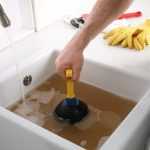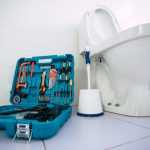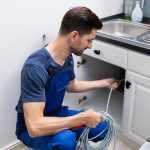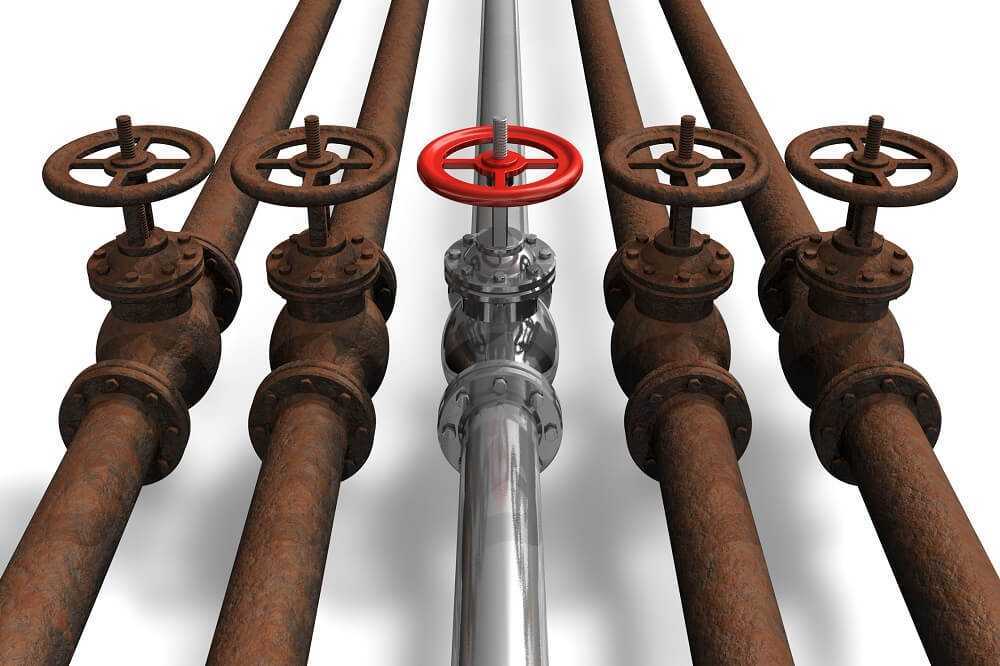When it comes to crucial home improvements, plumbing tops the list. Managing water is a fundamental necessity for every household. However, some of the DIY plumbing tasks you tackle can end up causing more harm than good, leading to stress-inducing nightmares. To help, we’ve compiled a comprehensive guide detailing thirty common plumbing nightmares to avoid. Starting with ten of these, our licensed plumbers want to share their top tips and tricks to avoid these pitfalls. So, let’s delve in without any further ado.
Contents
- 1. Incorrect Sink Installation
- 2. Ignoring Local Building Codes
- 3. Failing to Detect Leaks
- 4. Using Mismatched Pipes
- 5. Neglecting Vent Pipe Importance
- 6. Inadequate Pipe Slope
- 7. Over-Tightening Plumbing Connections
- 8. Lack of Water Shutoff
- 9. Sewer Line Negligence
- 10. Neglecting Pipe Insulation
- 11. Skipping Pressure Regulator Installment
- 12. Forgetting Drain Trap Seal
- 13. Incorrect Toilet Flapper Fixes
- 14. Misunderstanding Fixture Support Importance
- 15. Overloading Garbage Disposal
- 16. Over-Dependence on Drain Cleaners
- 17. Improper Soldering Techniques
- 18. Using Wrong Tape Type
- 19. Inadequate Pipe Hanger Spacing
- 20. Failing to Upgrade Pipes
- 21. Incorrect Shower Head Installation
- 22. Neglecting Permit Requirements
- 23. Overlooking Pipe Expansion
- 24. Misreading Water Meter Reading
- 25. Improper Caulking Application
- 26. Disregarding PEX Tubing Benefits
- 27. Overlooking Water Pressure Issues
- 28. Underestimating Frozen Pipe Hazards
- 29. Incorrect Bathtub Installation
- 30. Failing to Maintain Septic System
- Conclusion: Avoid Plumbing Nightmares
1. Incorrect Sink Installation
This is a common issue that can lead to long-term consequences for the home. The sink is a fundamental piece of home equipment, responsible for managing much domestic wastewater. Inconsistent alignment during sink installation can lead to leaky water connections and poor drainage among other issues. Always be sure you’re hanging and fitting your sink correctly for seamless functionality.
2. Ignoring Local Building Codes
Pressing ahead with home plumbing without consideration for local building codes presents significant risks including hefty fines. These codes exist to maintain safety and quality standards throughout the construction industry. When performing any form of domestic plumbing work, always consult the local building engineering guides and keep all implemented works within the regulations.
3. Failing to Detect Leaks

Water leaks will result in increased bills along with potential structural damage. Early detection can save both time and money. Detection tools should be used over manual inspection methods for better accuracy in diagnosing ongoing or potential leaks.
4. Using Mismatched Pipes
Picking wrong materials for pipes is a common mistake made by many homeowners trying DIY plumbing. Note that not all pipes are created equal – mismatched pipes can cause leaks or corrode over time, leading to substantial damage.
5. Neglecting Vent Pipe Importance
The vent pipe can often be overlooked, but it profoundly impacts your home’s plumbing system. The vent pipe’s purpose is to regulate air pressure within the pipes, thus maintaining optimal wastewater flow. Failing to install a vent pipe can lead to slow draining sinks or other hydraulic engineering issues.
6. Inadequate Pipe Slope
People often underestimate the importance of a correct pipe slope in plumbing. Without the appropriate pipe slope, water and waste may not effectively drain, leading to potential blockages and backups. Proper civil engineering principles dictate the slope to maximize fluid dynamics.
7. Over-Tightening Plumbing Connections
While ensuring secure connections is vital for effective plumbing, over-tightening can lead to a whole host of issues, from stripped screws to cracked fittings. It’s pivotal to understand the delicate balance between too loose and too tight when working with plumbing connections.
8. Lack of Water Shutoff
A significant DIY plumbing nightmare arises when homeowners don’t establish reliable points for water shutoff. In an emergency or even during regular maintenance, having direct access to shutoff valves can prevent flooding and unnecessary water wastage.
9. Sewer Line Negligence
The sewer line requires regular upkeep and maintenance to prevent clogs and back-ups. Yet, many homeowners neglect their sewer lines until a severe situation emerges. A well-maintained sewer line is essential to maintaining good home plumbing health.
10. Neglecting Pipe Insulation
Last but by no means least; neglecting pipe insulation could cause considerable damage during cold seasons by leading to frozen pipes. Insulating pipes correctly with suitable materials will protect against sudden bursts and save on the energy spent on heating water within the pipes.
11. Skipping Pressure Regulator Installment

Our dear DIY enthusiasts, one of the common nightmares we see in plumbing is skipping the pressure regulator installment. This device is crucial in controlling the pressure of water that flows through your tap valve or other home appliances. It prevents any undue stress on your pipes and fixtures. Without it, you may experience leaks due to excessive pressure in your building engineering systems. So, always remember to install a water pressure regulator for a smoothly functioning domestic plumbing system.
12. Forgetting Drain Trap Seal
Please, don’t forget the drain trap seal next time you’re dealing with construction works under your sink. The seal plays a significant role in preventing gas from leaking into your home from your drainage pipe. It traps a small amount of water creating a seal that stops sewer gases from entering back into the home. If installed incorrectly or forgotten altogether, it might result in foul smells that can turn your domestic comfort into an unpleasant experience.
13. Incorrect Toilet Flapper Fixes
Bathroom problems can be tricky if not handled correctly, and there’s no exception when it comes to fixing toilet flappers. The flapper acts like a seal for the water within your tank and can cause incessant toilet run if it is fixed improperly. As licensed plumbers, we’ve seen many instances where instead of replacing, people have tried to repair these using unsuitable materials leading to more significant issues down the line.
14. Misunderstanding Fixture Support Importance
In plumbing as well as in civil engineering, the importance of fixture support is often misunderstood and overlooked by DIY enthusiasts. This usually results in wobbly taps or sinks that are not just a nuisance but also risk damaging the pipes and valves they’re connected to. We recommend using proper means of support, such as brackets or strapping, to ensure your fixtures are firmly in place.
15. Overloading Garbage Disposal
Home appliances like your garbage disposal aren’t designed to be overloaded. If you’re constantly stuffing it full and running it beyond its capacity, you’re bound to run into problems. Bones, vegetable peels, and other hard food materials can damage the blades or even cause the motor to burn out. So be mindful, and protect your disposal from unnecessary burdens.
16. Over-Dependence on Drain Cleaners
While drain cleaners seem like a quick fix for clogged pipes, over-reliance on them can have adverse effects. The harsh chemicals found in these cleaners can degrade your pipes over time, particularly if they’re made from certain manufactured goods like PVC. Instead, try using a plunger or hand auger–it’s safer and often more effective.
17. Improper Soldering Techniques
Soldering is often needed when working with copper pipes in your plumbing system–a common part of the building engineering process. However, improper soldering techniques can lead to leaky connections or even serious damage to the pipe. Always make sure to clean and prep the area correctly before starting to heat and solder, and if in doubt–reach out to professional plumbers for assistance.
18. Using Wrong Tape Type
The humble plumber’s tape is an essential tool for creating watertight seals around threads of your tap valve or pipe connections. However, using the wrong type can lead to ineffective seals leading to leaks or damaging your threads when overtightening. Usually, a white PTFE tape is the best choice for most home plumbing needs.
19. Inadequate Pipe Hanger Spacing
In mechanical engineering, correct spacing is crucial–this includes the spacing of your pipe hangers. Poorly spaced pipe hangers can lead to sagging pipes and, consequently, slower drain flow and possible leaks. The general rule is to place a hanger every 1.2 meters for horizontal pipes and every 3 meters for vertical pipes, but always check with local building codes.
20. Failing to Upgrade Pipes
Last but not least, we’ve encountered situations where an old pipe system is causing problems and needs upgrading but is consistently ignored. Older plumbing systems might be made from galvanized steel which can rust and corrode internally over time, leading to discoloured water or lower pressure. A professional plumber’s advice is essential when dealing with such systemic issues in your home.
21. Incorrect Shower Head Installation
One of the common nightmares DIY plumbers face is incorrect shower head installation. If you’ve ever experienced a shower with inadequate water pressure, or encountered leaks on the wall, chances are, the shower head was not properly installed. It requires careful consideration of factors such as the angle, height and tightening of the shower arm; an approach which may come naturally to professional plumbers, but can be very tricky for an untrained person. To avoid complications, it’s best to call an expert from Dan’s plumbing for your showerhead installation needs.
22. Neglecting Permit Requirements

The excitement of starting a DIY project can make one overlook certain necessities – like permits. Plumbing projects often require permits issued by local authorities, and non-compliance could result in hefty fines or even demolition of the work done. It’s important to remember that these regulations exist to ensure all plumbing works meet certain safety standards which a licensed plumber will be familiar with. Always err on the side of caution.
23. Overlooking Pipe Expansion
Pipes expand and contract with changes in temperature – a phenomenon that DIYers often fail to consider when installing plumbing systems. This oversight can lead to cracks in the pipes, disrupting water flow and ultimately leading to costly repairs. Professional plumbers follow codes that account for pipe expansion preventing potential headaches down the line.
24. Misreading Water Meter Reading
Misreading your water meter may result in inaccurate bill payments or failure in detecting leaks early. Learn how to correctly read your meter; this includes understanding that meters measure water in litres and learning how to distinguish between cubic metres and litres. Should reading your meter prove challenging, consider consulting a licensed plumber from Dan’s Plumbing for assistance.
25. Improper Caulking Application
Applying caulk might seem simple, but it can quickly turn into a disaster with spills and leaks if not done properly. This is especially true when caulking around bathtubs or sinks where water exposure is frequent. It’s important to clean the area properly, apply the right amount of caulk, and allow enough drying time before exposing it to water, otherwise serious moisture damage may occur.
26. Disregarding PEX Tubing Benefits
Many DIY plumbers opt for copper or PVC pipes because they’re well-known. However, overlooking PEX (cross-linked polyethylene) tubing can be a mistake. It’s easy to install, flexible, resistant to scale and chlorine, and less likely to burst from freezing. It might be just what your plumbing project needs!
27. Overlooking Water Pressure Issues
If your water trickles instead of flows, you’re likely dealing with low water pressure in your house—a common problem often underestimated by DIY enthusiasts. Not addressing this issue promptly can lead to extensive damage over time. Identifying the cause is key—a professional plumber can help diagnose whether the problem lies in blocked pipes, an incorrect valve setting or even city supply issues.
28. Underestimating Frozen Pipe Hazards
Australian winters can be severe, and frozen pipes are a real risk. The pressure build-up from frozen water can lead to bursting pipes and cause severe flooding in your home. So always ensure that your home’s insulation extends to your plumbing system too. Keep a vigilant eye during those chilly days and don’t hesitate to call professionals like us in case of such emergencies.
29. Incorrect Bathtub Installation
Incorrectly installing bathtubs results in poor drainage, leaks, and damaged flooring. A bathtub is not just another furniture piece—it’s a complex component of your plumbing system. Before installing, you need to ensure adequate support for the weight of the tub and water it will hold. The installation also involves aligning the drain, overflow, and trap correctly—a task best left to licensed plumbers who understand the intricate details.
30. Failing to Maintain Septic System
A septic system necessitates routine maintenance to function effectively. Ignoring its upkeep can lead to severe problems including sewage backups and environmental pollution. Regular inspections by a licensed septic serviceman help detect potential problems early, saving you from future expensive catastrophe. So if you own a septic system, make its maintenance a priority and avoid DIY solutions where experience matters.
Conclusion: Avoid Plumbing Nightmares
While embarking on DIY plumbing projects may seem budget-friendly and satisfying in the short-term, they could lead to long-term issues if not handled correctly. Avoid these common pitfalls by ensuring correct installation, adhering to permit regulations, considering weather aspects, and getting professional advice whenever necessary. Trust us at Dan’s Plumbing for reliable services—saving you time, money and stress.
Dan’s Plumbing is a leading name in emergency plumbing across Australia. We ensure prompt and effective plumbing solutions for residents across Brisbane, Sydney, Melbourne, and the Gold Coast.
- Simple Plumbing Tips When Going on Holidays, Your Aussie Holiday Plumbing Checklist - October 26, 2024
- Preventing Corrosion in Your Pipes: Professional Pipe Inspection Services - September 26, 2024
- Upgrading to Smart Plumbing Technology – Professional Smart Home Integration - September 26, 2024
Related posts:
 When DIY Plumbing Won t Cut It: Signs You Need to Call a Licensed Plumber
When DIY Plumbing Won t Cut It: Signs You Need to Call a Licensed Plumber
 Detecting Common Sydney Household Plumbing Leaks: When to Call a Professional
Detecting Common Sydney Household Plumbing Leaks: When to Call a Professional
 Simple Bathroom Maintenance Tips for Beginners Knowing When to Call Dan’s Plumbing
Simple Bathroom Maintenance Tips for Beginners Knowing When to Call Dan’s Plumbing
 Basic Toilet Troubleshooting Problems and When You Need to Call a Licensed Plumber
Basic Toilet Troubleshooting Problems and When You Need to Call a Licensed Plumber
 Recognizing Signs of a Plumbing Emergency: When to Call Dan’s Plumbing ASAP
Recognizing Signs of a Plumbing Emergency: When to Call Dan’s Plumbing ASAP
 Steps to Take During a Plumbing Emergency and When to Call a Professional Emergency Plumbing Service
Steps to Take During a Plumbing Emergency and When to Call a Professional Emergency Plumbing Service



